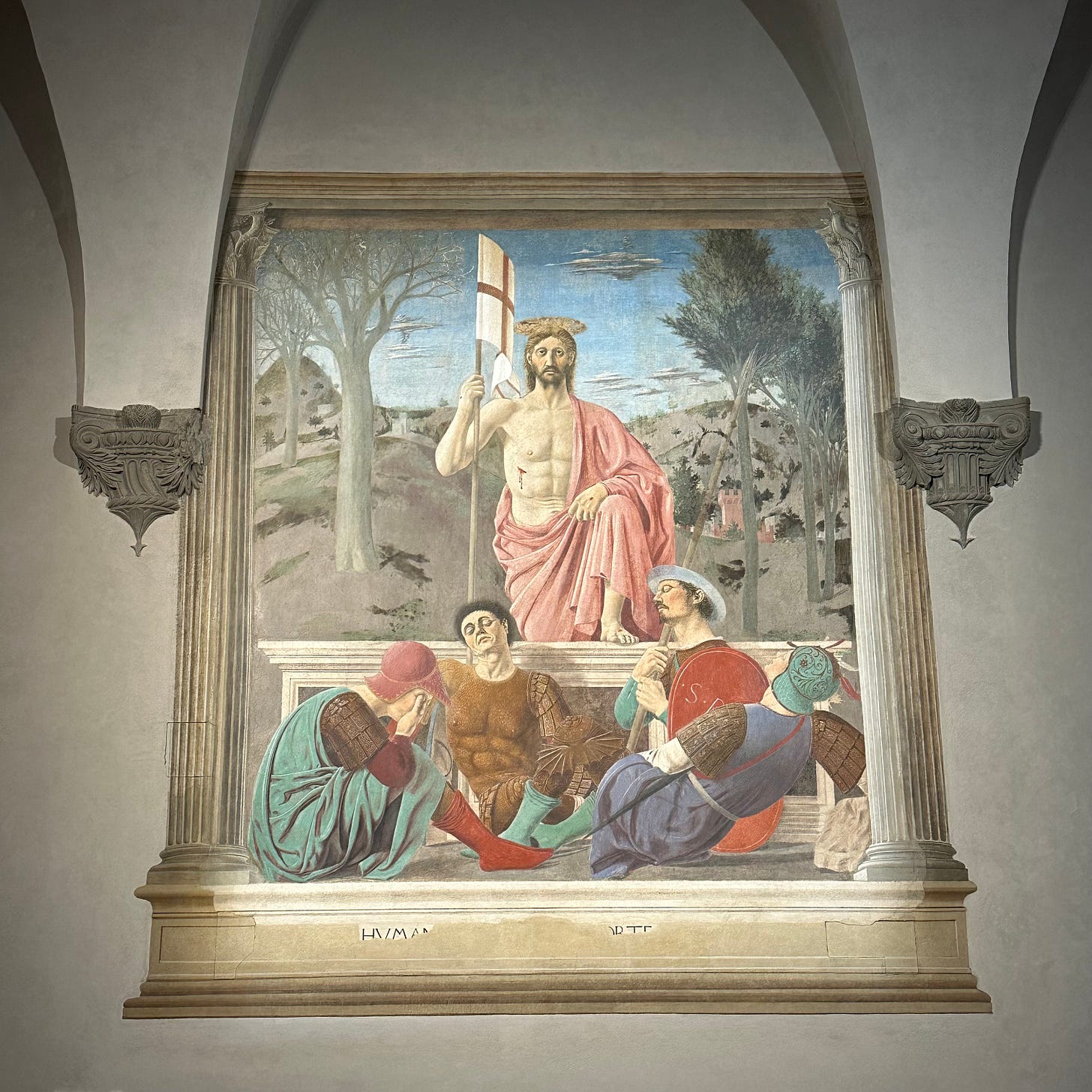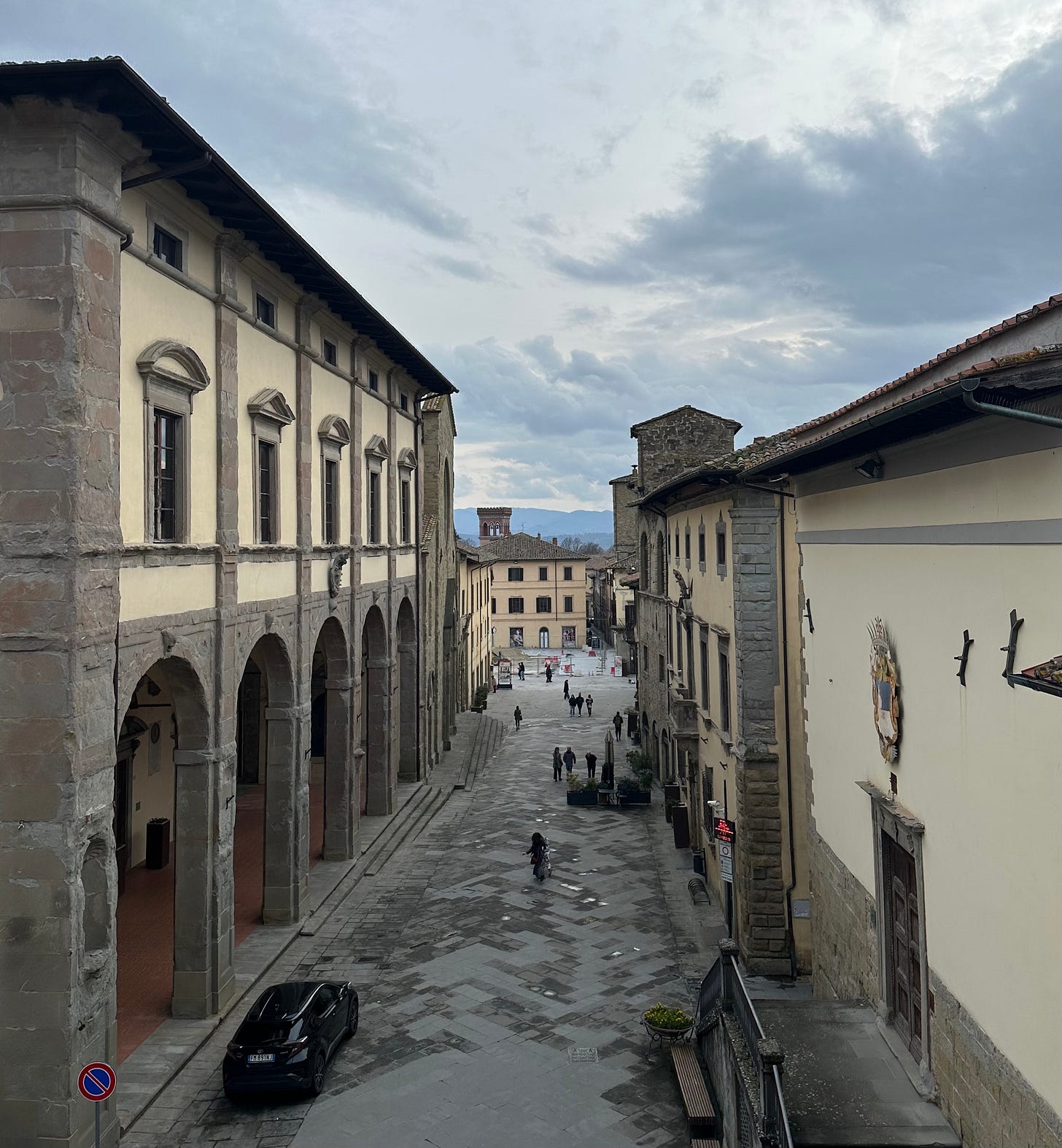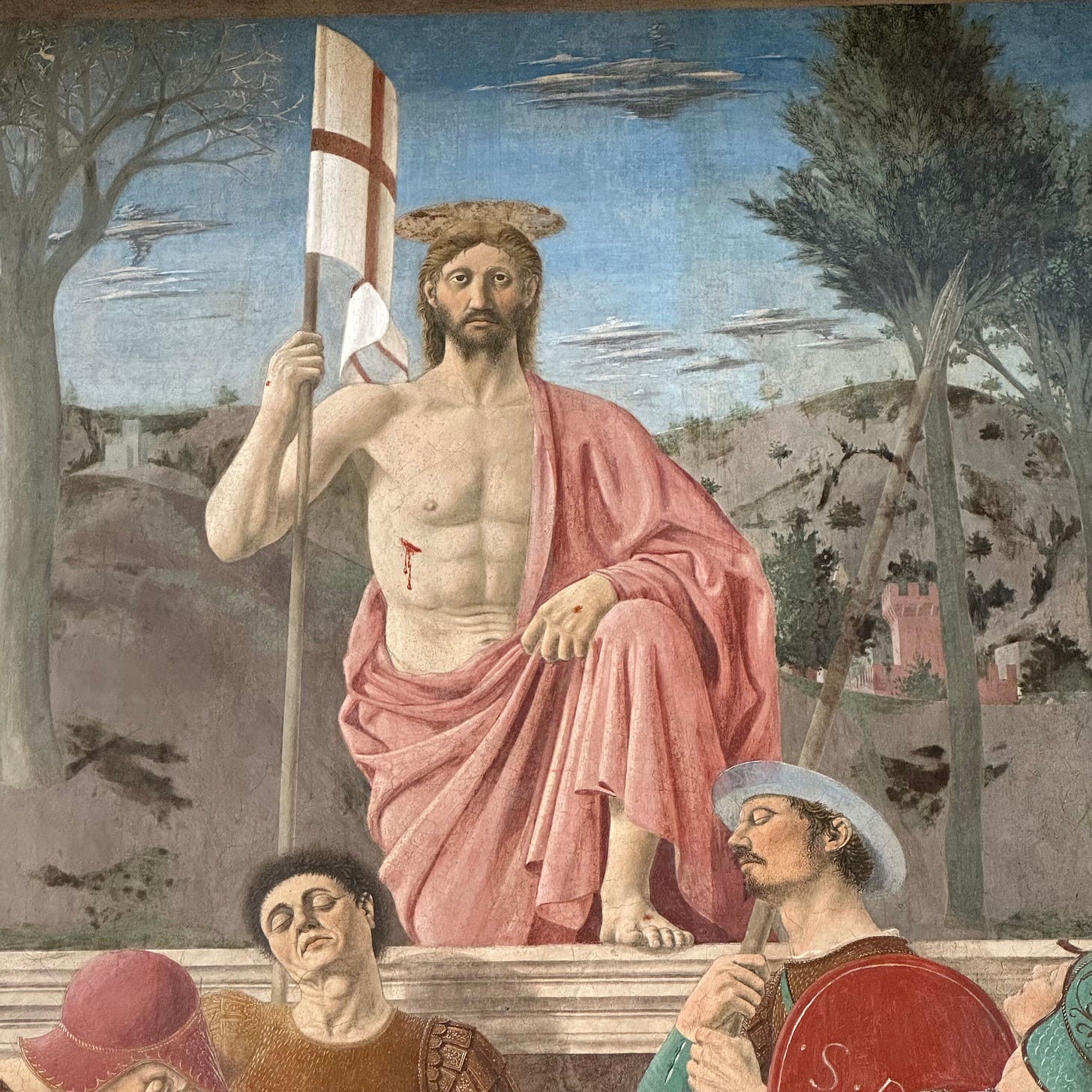"The Best Picture in the World": one of my favourite paintings, and the serendipitous tale of how it survived the Second World War
In 1925 Aldous Huxley wrote an essay called “The Greatest Picture” in his book Along the Road, Notes and Essays of a Tourist. It begins:
The best picture in the world is painted in fresco on the wall of a room in the town hall. Some unwittingly beneficent vandal had it covered, some time after it was painted, with a thick layer of plaster, under which it lay hidden for a century or two, to be revealed at last in a state of preservation remarkably perfect for a fresco of its date. Thanks to the vandals, the visitor who now enters the Palazzo dei Conservatori at Borgo San Sepolcro finds the stupendous Resurrection almost as Piero della Francesca left it. Its clear, yet subtly sober colours shine out from the wall with scarcely impaired freshness. Damp has blotted out nothing of the design, nor dirt obscured it. We need no imagination to help us figure forth its beauty; it stands there before us in entire and actual splendour, the greatest picture in the world.
Huxley, The Greatest Painting, 1925
The painting of which he writes is Piero della Francesca’s Resurrection, plausibly painted when Piero was in his early forties and at the pinnacle of his career. In 1458-9 Piero had been called to Rome by Pope Pius II, the Sienese Aeneas Silvio Piccolomini, and while there had painted in the rooms of the Apostolic Palace. These frescoes were subsequently painted over by Raphael and his workshop and nothing of them survives. However we know of the project from a contract of April 1459 which refers to a payment of 140 florins for “certain paintings” in the Pope’s room.
The exact date of the Resurrection at Sansepolcro is uncertain but perhaps followed this Roman sojourn: the garlanded hero returning to his hometown. Piero remained a resident of Borgo San Sepolcro throughout his whole life. He played an active part in the city’s affairs, always returning home and eschewing the bright lights of Florence and Rome. We can imagine him enthusiastic to play his part in the town’s bid to be recognised as a city.
Just a few years earlier, in 1454, a local monk had written a history of the town which leaned heavily on the tradition that it had been named in the tenth century for the Holy Sepulchre by pilgrims returning from the Holy Land laden with relics. For the good burghers of San Sepolcro theirs was a Tuscan “New Jerusalem” in the prosperous agricultural lands of the upper Tiber valley.
The pride of the putative city was, then, inextricably intertwined with the eponymous Holy Sepulchre. Thus Piero painted the scene of the Resurrection, as Huxley says, “on the wall of a room in the town hall”, an exquisite fusion of civic identity and religious faith.
The campaign would be successful, though not in Piero’s lifetime: in 1520 Pope Leo X elevated Borgo San Sepolcro to a bishopric giving it full city status, and when the council gathered they did so in front of Piero’s extraordinary, mesmerising, fresco (as they did until 1959 when the town hall became the Civic Museum).
Christ rises, ominscient and calm, from his tomb which Piero has set firmly in the undulating landscape of the upper Tiber valley; clouds scudding across the sky; the verdant trees on the right promising rebirth. He fixes us with an unsettling, unwavering, all-seeing gaze and holds the flag of the Resurrection: a red cross on a white ground. Passion and Rebirth.
Blood drips from the wound of Longinus’ spear. He pays no heed to this wound of the flesh, nor to the wounds left by the nails in his hands and the foot which steps forth from a grand sarcophagus, which owes far more to antiquity than to any description in the gospels, for example this from Matthew bears little similarity to Piero’s version.
And, behold, there was a great earthquake: for the angel of the Lord descended from heaven, and came and rolled back the stone from the door, and sat upon it.
Matthew 28:2, King James Version
As Christ’s foot rests on the edge of the sarcophagus the naturalistic folds in the skin of his belly remind us of his tangible humanity, echoed in the drapery of the cloak, the shadow at the collar bone, and the taut tendons at his neck.
Keep reading with a 7-day free trial
Subscribe to Understanding Rome's Newsletter to keep reading this post and get 7 days of free access to the full post archives.





